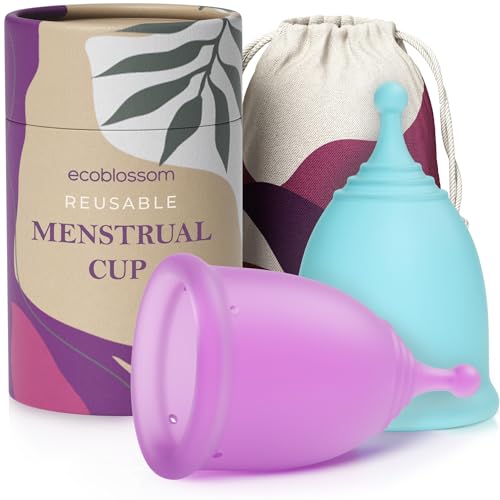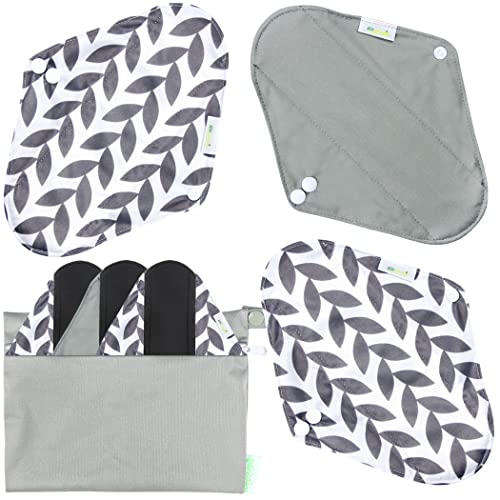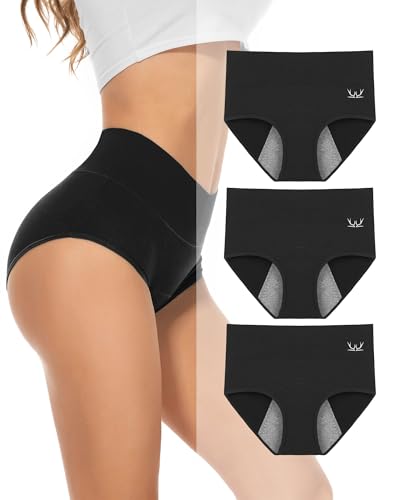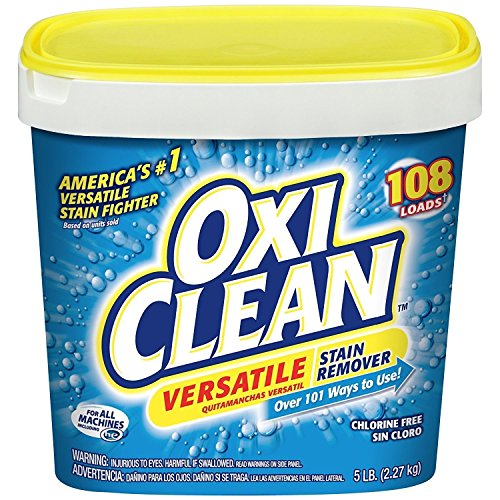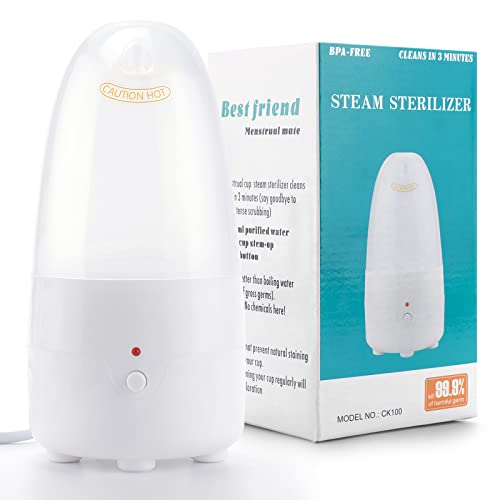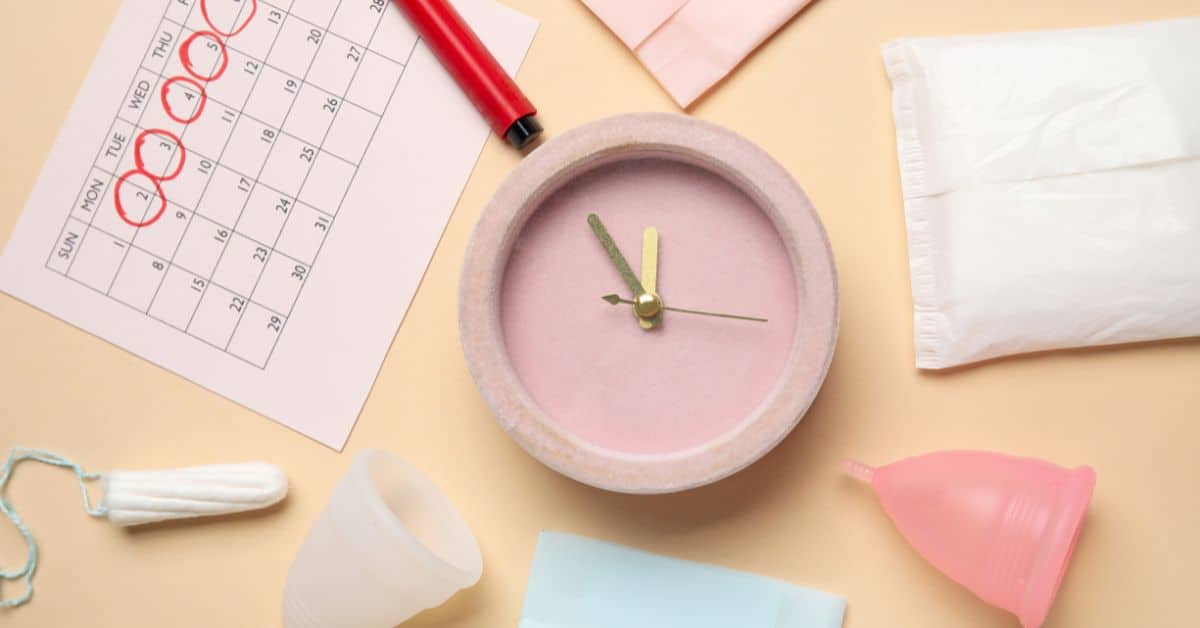
This post may contain affiliate links, meaning I may receive a commission if you purchase through my links. I only recommend products I have personally tested or have thoroughly researched. All opinions are my own. Please read the full disclosure for more information.
Finding sustainable products that are not only good for you, but also easy on your budget is difficult. For women, this becomes even more difficult when trying to find hygiene products like haircare, skincare, makeup, and yes, even menstruation products like pads and tampons.
Fortunately, with the use of alternative products like reusable menstrual cups (my personal budget-friendly favorite) and cloth pads, it’s not as difficult as it used to be.
How to Reduce Menstrual Waste and Save Money
Environmental concerns and budgets are not the only reasons to opt in for sustainable period products. Conventional tampons and “sanitary pads” often contain traces of unknown chemicals including pesticides (from non-organic cotton), dioxin from bleach, and god knows what else is included in “fragrances”.
These traditional ‘sanitary products’ can negatively affect our menstrual health and perhaps even our reproductive health as these unknown amounts of chemicals can cause an imbalance in our hormones.
So, if you are looking for safe alternatives and reusable products for your menstrual hygiene management, here is a list of safe, affordable, and eco-friendly alternatives.
Reusable Pads
Reusable pads are one of the best and most versatile options and alternatives to disposable pads.
Reusable cloth pads can be made from many different types of materials including cotton, bamboo, flannel, and more. I use these charcoal-infused bamboo pads all the time, and actually bought a second set (for a total of 12) that I use during my periods, and also just for added daily dryness and freshness.
They are very absorbent and can hold up to 48 ml of menstrual blood, compared to the 15 ml that a standard tampon can hold. They are easy to wash (machine washable and dryable) and can last for years, depending on how frequently they are worn and how well they’re cared for.
Some women have reported that they have fewer cramps, and even shorter periods after using reusable pads for a while. Personally, I have noticed less cramping using cloth pads than when I have used tampons and disposable pads, though not a significant amount.
However, when I have used reusable menstrual cups, I have noticed significantly less cramping as compared to when I had used tampons (more on this in a second!).
And, let’s be honest. Who doesn’t want fewer period cramps?
Benefits of reusable cloth pads:
- Very absorbent (up to 48+ ml)
- Fewer cramps
- Long lifespan (up to 10 years+)
- Great for all ages (adolescent girls to post-menopausal women seeking daily pads)
- Can be used for menstrual cycles and even light-heavy urinary incontinence
- Less likely to upset your natural vaginal bacteria (Prevents bacterial vaginosis compared to disposable pads which may have perfumes or other chemicals)
Are cloth pads safe?
Absolutely! As long as they are used correctly.
Cloth pads are just as sanitary as disposable pads, but have do have a few downsides. Mostly if they are used incorrectly or are improperly cared for.
- Can’t be shared with others (or shouldn’t be shared at least)
- Do require care to be reused (machine wash/dry)
- Can stain over time (pretreating and rinsing shortly after use yes reduces this)
- Can be somewhat of a hassle when needing to change to a fresh pad (this set comes with a waterproof bag that makes it easy and convenient)
- May shift around on your underwear between bathroom breaks
- May experience slight leaking (depends on the pad, positioning, etc.)
You can use OxiClean Powder (5 lbs) which is non-toxic, biodegradable, and an eco-friendly way to remove stains from your cloth pads. If you prefer you can also use OxyClean Spray instead of the powder.
Reusable Menstrual Cups
Menstrual cups have become a top favorite in my sustainable menstrual products kit, for many reasons.
- They are inexpensive ($13 for this set of 2 reusable cups)
- They can last up to 10 years or longer (made of medical-grade silicone)
- They can reduce period cramps compared to tampons (they did for me!)
- Little or no risk of toxic shock syndrome compared to tampons (when used correctly)
- Can be used for up to 12 hours, and even at night (no more timing your pad changes!)
- Very comfortable and even unnoticeable when inserted correctly
- No leaking and holds up to 50 ml
- Reduced irritation and dryness (unlike with tampons)
- Perfect for sports, camping, swimming, etc.
- Perfect for busy lifestyles
So, overall, you can tell why cups are one of the best options for many women looking for sustainable menstruation products.
But the downsides? Minimal…
- Can be a little tricky or difficult to insert at times (easy with practice though)
- Can be difficult to clean if you don’t have access to clean water and soap
- Aren’t suitable shortly after vaginal births (check with your doctor on when you can resume use)
- Can be messy when changing after 12 hours (I always clean and sanitize my cup while I shower, and before I reinsert it)
- Occasional leaking shortly after you reinsert it (wiping thoroughly after prevents this mess though)
- May not fit well for all women, and may not be a suitable option for all women
- Can be difficult to use for adolescent girls
As a whole, menstrual cups are the most affordable, long-lasting option for busy women or for women who just prefer to not worry about the stress of constantly managing tampon and pad changes.
It’s also an excellent eco-friendly alternative to traditional period products and requires less effort than other reusable products.
However, it is also important to maintain your menstrual cups cleanliness, so using an automated steamer is an excellent option for women planning to use cups long term.
I use this automated menstrual cup steamer that does the job in about 3-minutes. Usually, my morning routine consists of steaming my cup while in the shower before using the cup. This saves me time, and after it is freshly sanitized, it’s still a little warm which actually makes insertion a bit easier since the cup is more malleable.
Period Underwear
Menstrual underwear has become more popular over the past several years, especially among teen girls and active ladies. However, there is such a variety of period underwear available that nearly every woman can find the perfect fit, shape, and absorbency they need for their menstrual cycle.
Since not all period underwear is created equal though, it’s important to find the right absorbency.
I personally have not used period underwear, and would likely use it on its own without a cup or pad, I can’t say that I have any preference on a brand. However, after reading some reviews on this set of 3 high-waisted period panties for women, many people said they absolutely loved them. You can also get this 4-pack for girls.
Do Period Panties Actually Work?
For period panties, most brands recommend using a pad, cup, or tampon in addition to the underwear as they typically can only provide light to moderate absorbency. Otherwise, the underwear would be too thick and uncomfortable, or not offer enough absorbancy.
But, if you often have fairly light days or only occasional spotting, period underwear may be a great option for you.
From many of the reviews of several brands, many women said they still experienced leaking, and that their period underwear provided no protection at all.
Honestly, I believe that period panties are such a new thing that many companies are still learning what works well and what doesn’t, and underwear is also such a personal preference thing that some women won’t be able to find a pair that works for them.
If you are skeptical, you may just have to experiment with different brands and styles, or you may just have to use them as a backup for a cup, tampon, or pad.
How Reusable Period Products Reduce Period Poverty
Period poverty is a worldwide issue that also affects women in the United States. Even though some states have, or are trying to remove the “tampon tax”, most states still consider these necessary menstrual hygiene products a luxury, costing women even more.
So, not only do many women suffer from a general lack of access to, or lack of menstrual products altogether, but they may not be able to even afford these products.
This is a big public health concern as the women who suffer from period poverty are often unable to leave their homes during this time, or are at a much higher risk of diseases. They can suffer from infections, poor hygiene, and are also likely to experience reduced mental health during their monthly cycles.
This lack of gender equality that occurs with period poverty is more often in rural areas that have little or no access to proper waste disposal, sanitation facilities, and a regular clean water supply. Even public bathrooms in these regions may not carry disposable period products.
Alternative options like reusable period products can help reduce some of the period poverty that occurs, and also has a much more positive environmental impact.
Here’s a list of the top 3 products to reduce period poverty.
How to Get Free Period Products
To improve menstrual equity among women, organizations like the Alliance for Period Supplies can help you or someone you know get access to free menstrual products.
The Importance of Reducing Menstrual Waste
Plastic waste is one of the biggest and worst forms of pollution that our planet is suffering from right now. Things like plastic bags, straws, plastic tampon applicators, fast food containers, and really any other type of single-use plastic contributes up to 380 million pounds of waste every year.
In addition to millions of pounds of new plastic every year, it takes anywhere from 20-500 years for plastic to decompose.
As if that’s not bad enough, much of this plastic ends up in our waterways and has even been found in human bodies.
Women typically menstruate 2-7 days at a time, with an average cycle between 28-31 days. The time a woman menstruates takes place over a 20-40 year span.
If using only disposable period products, this adds up to around 400 pounds of pads and tampons during one woman’s lifetime. This equals 5,000-15,000 disposable sanitary napkins or tampons.
Related Articles
- 3 Simple DIY Cleaners to Save Money and the Environment
- 60 Ways to Save More Money in 2024
- 10 Eco-Friendly Lifestyle Changes That Will Save You Money
- How I Save a Ton of Money Refilling my own Ink
